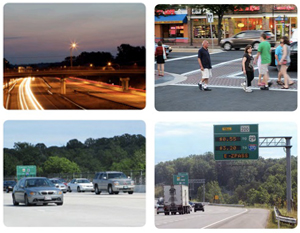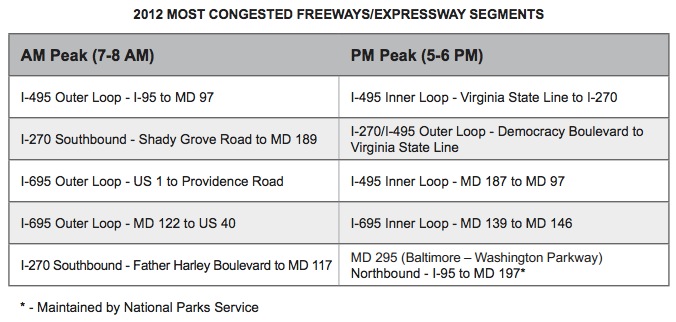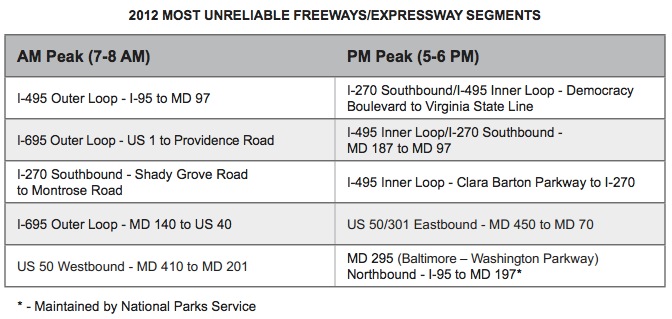MARYLAND STATE HIGHWAY ADMINISTRATION
MARYLAND DEPARTMENT OF TRANSPORTATION
Executive Summary
 The Maryland State Highway Administration’s (SHA) mobility related efforts in calendar year 2012 are highlighted in the 2013 Maryland State Highway Mobility Report. Mobility is a key performance area (KPA) at SHA which aims to “Support Maryland Economy and Communities with Reliable Movement of People and Goods”. This report identifies successes, challenges, and strategies being utilized to improve the transportation services SHA delivers to Marylanders and the traveling public.
The Maryland State Highway Administration’s (SHA) mobility related efforts in calendar year 2012 are highlighted in the 2013 Maryland State Highway Mobility Report. Mobility is a key performance area (KPA) at SHA which aims to “Support Maryland Economy and Communities with Reliable Movement of People and Goods”. This report identifies successes, challenges, and strategies being utilized to improve the transportation services SHA delivers to Marylanders and the traveling public.
The report concentrates on the following four strategic focus areas:
- Mobility & Reliability
- Incident Management & Traveler Information Systems
- Multi-Modalism & Smart Growth
- Freight
The following is a summary of congestion and reliability performance on the States’ roadway system in 2012:
- In 2012, vehicle miles travelled (VMT) in Maryland reached 56.4 billion miles. This is 0.6% increase over 2011 and less than 1% lower than the all time high of nearly 57 billion in 2007. The 2012 VMT in the Baltimore – Washington region was 47.2 billion, and the remaining 9.2 billion VMT occurred on the Eastern Shore and in Western Maryland. About 72% of the VMT occurred on state and toll maintained roadways.
- Analysis of the weekday vehicle speed data shows that 13% of the Maryland freeways/expressways system experience congested conditions in the AM peak hour. Congestion levels in the PM peak hour were worse with 20% of the freeways/expressways experiencing congested conditions. AM and PM peak hour travel conditions have slightly worsened compared to 2011 conditions.
- In 2012, on freeways/expressways, 23% of the AM peak hour VMT and 33% of the PM peak hour VMT was in congested conditions compared to 16% and 26% (AM and PM peak hour respectively) in 2011. On weekdays, approximately, 94% of the peak hour congestion occurred in the Baltimore – Washington region.
- Motorists travelling on Maryland freeways/expressways on weekdays experienced a total annual delay of 35 million hours and consumed 29 million gallons of extra fuel due to congestion. This translates into $1.27 billion dollars of annual user costs due to congestion on Maryland’s freeways/expressways system alone.
- Reliability performance measures illustrate the variability in traffic congestion so that highway users can add the extra “buffer” time to their trip for reaching their destination on time. The planning time index (PTI) which is a standard indicator of highway reliability is a comparison of the worse case travel time to free flow conditions. The analysis showed 91% in the AM peak hour and 83% in the PM peak hour of the Maryland freeways and expressways have a PTI value of <1.5 which is considered acceptable for reliability.
The following roadway segments are considered the most congested for the AM and PM weekday peak hour.
The following roadway segments are considered the most unreliable for the AM peak hour and PM peak hour on a weekday. Motorists traversing these segments experience the greatest travel time variation compared to free flow conditions.
Download full report (PDF): 2013 Maryland State Highway Mobility Report
About the Maryland State Highway Administration
www.roads.maryland.gov
“Since SHA’s inception as the State Roads Commission in 1908, the organization has built on its foundation of quality and integrity. We are proud of our tradition of excellence and happy to share our vision, our beliefs and our values with you. We believe that building a successful organization is similar to building roads or bridges because it all starts with a solid foundation. Instead of standard construction materials, we rely on our most important assets — our values and our people. The State Highway Administration constantly strives to improve our team’s skills through a variety of career development programs.”
About the Maryland Department of Transportation
www.mdot.maryland.gov
Tags: Maryland, Maryland Department of Transportation, MD, MDOT, State Highway Administration








 RSS Feed
RSS Feed